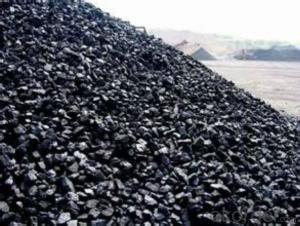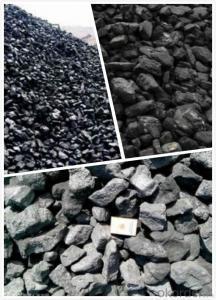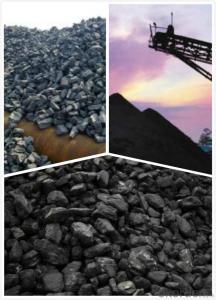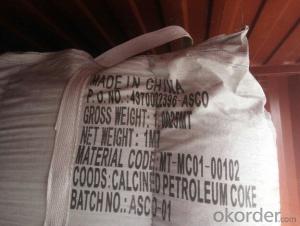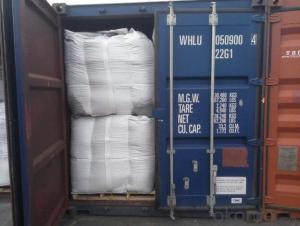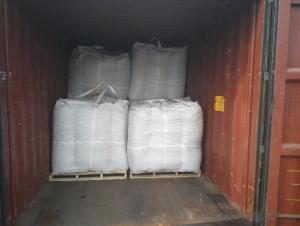60-90mm Foundry Coke for Furnace Charge
- Loading Port:
- Tianjin
- Payment Terms:
- TT OR LC
- Min Order Qty:
- 1000 m.t
- Supply Capability:
- 20000 m.t/month
OKorder Service Pledge
OKorder Financial Service
You Might Also Like
Product Description
Foundry Coke is one of metallurgical raw materials used for steel making.The coke handled by our couporation is made from superior coking coal of Shanxi province. Provided with the dvantages of low ash, low sulphur and high carbon.Our coke is well sold in European,American,Japanese and South-east Asian markets.
Features
This is a special coke that is used for furnaces to produce cast and ductile iron products. It is a source of heat and also helps to maintain the required carbon content of the metal product. Foundry coke production requires lower temperatures and longer times than blast furnace coke.
Specification
Fixed Carbon | Sulphur Content | Moisture | V.Matter | Ash |
86%min | 0.7%max | 5%max | 1.2%max | 12%max |
88%min | 0.65%max | 5%max | 1.5%max | 10%max |
85%min | 0.8%max | 15%max | 2%max | 13.5%max |
Pictures
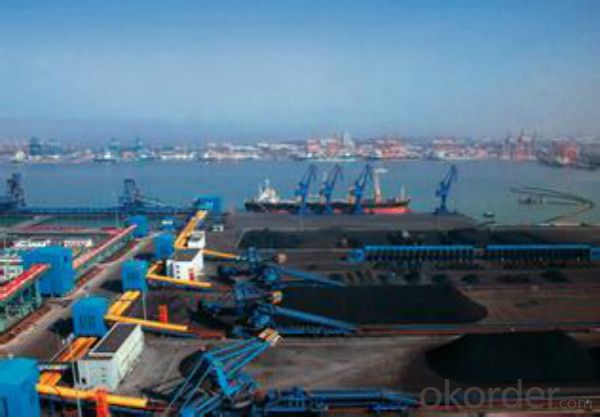
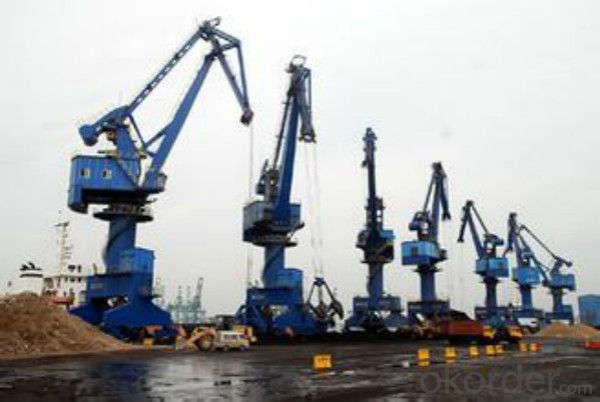
FAQ:
1 Time for after-sales?
1 year.
2 Payment terms?
D/P, L/C, T/T with downpayment
- Q: What do you stand for?Tar, smoke, nicotine, and carbon monoxide. What do you mean? What's the size of the smoke, or the size of the smoke? What's the connection? Smoking is harmful, so how do you choose to smoke smaller cigarettes?
- The smoke was in the size of a smoker is refers to the amount of nicotine. The smoke is enough to mouth after the majestic. Enough cool,A novice at it. I think most of the carbon monoxide content. Carbon monoxide content is high after the head halo. The novice, this must be kept large. Tar, tar that smoke burning more fully the feeling in the mouth sweet, sweet fragrance..When is the strength of cigarettes and their taste.
- Q: What are the health effects of carbon monoxide poisoning?
- Carbon monoxide poisoning can have serious health effects on the human body. When inhaled, carbon monoxide (CO) quickly enters the bloodstream and binds to hemoglobin, the oxygen-carrying component of red blood cells. This process reduces the blood's ability to transport oxygen throughout the body, leading to tissue hypoxia (oxygen deprivation). The symptoms of carbon monoxide poisoning can vary depending on the level and duration of exposure, but commonly include headache, dizziness, nausea, confusion, weakness, and shortness of breath. These symptoms can easily be mistaken for other illnesses, which makes carbon monoxide poisoning particularly dangerous, as it can go undetected until it reaches critical levels. In severe cases, carbon monoxide poisoning can lead to loss of consciousness, seizures, coma, and even death. Prolonged or repeated exposure to lower levels of carbon monoxide can cause long-term health issues, including memory problems, difficulty concentrating, mood changes, and cardiovascular complications such as heart disease. Certain populations are more vulnerable to the effects of carbon monoxide poisoning, including young children, pregnant women, the elderly, and individuals with pre-existing heart or lung conditions. Additionally, exposure to high levels of carbon monoxide in enclosed spaces, such as homes with faulty heating systems or car garages, can pose a significant risk. To prevent carbon monoxide poisoning, it is crucial to ensure proper ventilation in living spaces and regularly maintain fuel-burning appliances, such as furnaces, water heaters, and stoves. Installing carbon monoxide detectors in homes is also highly recommended, as they can provide an early warning of dangerous levels of the gas. If suspected of carbon monoxide poisoning, immediate action should be taken to remove oneself from the source of exposure and seek medical attention. Medical professionals may administer oxygen therapy to increase the blood's oxygen levels and facilitate the removal of carbon monoxide from the body. In conclusion, carbon monoxide poisoning can have severe health effects, ranging from mild symptoms to life-threatening conditions. Awareness, prevention, and prompt response are vital in protecting individuals from the dangers of carbon monoxide exposure.
- Q: Method for making carbon fiber board
- Our carbon fiber board adopts autoclave molding process, the product quality is good, no white spots, bubbles, lines and other defects, factory direct supply in bulk, at the same time to provide CAD customized processing services.Autoclave molding technology has the following remarkable advantages: high volume of fiber components, good quality stability, simple molding process
- Q: What should be done to deal with leakage of carbon monoxide from the plant?
- The hazardous and dangerous characteristics of carbon monoxide, carbon monoxide, is the Chinese name of CO. It is the product of incomplete combustion of materials. It is slightly soluble in water and soluble in various organic solvents such as ethanol and benzene. Mainly used in industrial chemical synthesis, such as synthetic methanol, phosgene, etc., or refined metal reducer. Occupation exposure to carbon monoxide in manufacturing steel and iron, coke, ammonia, methanol, graphite electrode, printing and dyeing factory, singeing, internal combustion engine powered coal mining blasting; non occupation contact is more extensive, such as household water heater was boiling water, winter coal, gas heating and so on, will produce carbon monoxide. Carbon monoxide is a flammable toxic gas known, but because of its physical and chemical properties of colorless smelly, so it is not easy to be aware of the harm, so it is not only the occupation killer, or the people's daily living potential. Carbon monoxide mixed with air can form an explosive mixture. When exposed to fire, high heat can cause combustion and explosion. Bottled carbon monoxide in case of high fever, increased pressure within the container, cracking and explosion. Because carbon monoxide has flammable properties, strong oxidizing agents and alkalis are its inhibitions. If the fire, should immediately cut off the gas source; if not immediately cut off the gas source, is not allowed to extinguish the burning gas.
- Q: What is the symbol for carbon?
- The symbol for carbon is C.
- Q: What is latent carbon?
- If there is already one or more chiral centers in the molecule, the chiral center of the molecule will result in a non enantiomer, for example:The C-2 2- hydroxybutyric acid is chiral, is a chiral molecule.C-3 is connected with the two hydrogen atoms of the same and two not the same group, it is a potential chiral carbon atoms. When a hydrogen atom on the C-3 is a different from the other three atoms or groups (such as OH) instead, it generates a new chiral carbon atom. This new chiral carbon atom has two opposite configuration, and the chiral carbon atoms of the original configuration is the same, so the product is replaced by the diastereoisomers, their output is not equal, is often far away.This is not directly after separation of chiral molecules in latent chiral carbon atoms into chiral carbon atoms, and generate different amounts of stereoisomers called "chiral synthesis" (chiral synthesis), also known as "asymmetric synthesis" (asymmetric synthesis).
- Q: What is the relationship between carbon emissions and air pollution?
- Carbon emissions contribute to air pollution. When carbon-based fuels such as coal, oil, and natural gas are burned, they release carbon dioxide (CO2) into the atmosphere. This CO2, along with other pollutants like nitrogen oxides and sulfur dioxide, can react with sunlight and other chemicals in the air to form smog and particulate matter. These pollutants can have detrimental effects on air quality, human health, and the environment, making the relationship between carbon emissions and air pollution significant.
- Q: What is carbon capture and storage?
- The aim of carbon capture and storage (CCS) technology is to lessen carbon dioxide (CO2) emissions from major sources like industrial processes, power plants, and others. It works by capturing CO2 emissions before they are released into the atmosphere and then storing them securely underground. To capture carbon, specialized equipment is typically used to trap CO2 from flue gases or industrial processes. The captured CO2 is then compressed and transported through pipelines or ships to a suitable storage site located deep underground. These storage sites can include depleted oil and gas fields, saline aquifers, or deep coal seams. The storage process ensures long-term containment of CO2 and reduces the risk of leakage. This is achieved by monitoring the storage site for signs of leakage, maintaining the integrity of the storage infrastructure, and selecting suitable sites with geological features that aid in long-term CO2 containment. Carbon capture and storage has the potential to greatly reduce CO2 emissions and contribute to climate change mitigation. By capturing and storing CO2 instead of releasing it into the atmosphere, industries can continue using fossil fuels while minimizing their environmental impact. This is particularly beneficial for industries that are challenging to decarbonize, such as cement production, steel manufacturing, and natural gas power plants. Despite its promise, the widespread implementation of carbon capture and storage faces challenges and limitations. One significant challenge is the high cost associated with establishing CCS infrastructure and operations. Additionally, finding suitable storage sites and addressing public concerns about the safety and environmental impact of underground CO2 injection can pose significant obstacles. Nevertheless, carbon capture and storage is considered an essential tool in the battle against climate change. It can play a crucial role in achieving global emission reduction goals and transitioning to a low-carbon economy. With advancing technology and decreasing costs, the widespread adoption of carbon capture and storage may become increasingly feasible and necessary.
- Q: How is carbon used in the production of construction materials?
- Carbon is used in the production of construction materials in several ways. One of the most common applications is in the production of steel, which is a vital material in the construction industry. Carbon is a key component in the iron and steel-making process, as it is combined with iron to create a stronger and more durable material. The addition of carbon to iron forms a compound known as steel, which has excellent structural properties and can be used to construct various components of buildings, such as beams, columns, and reinforcement bars. Additionally, carbon fibers are increasingly being used in the production of construction materials. Carbon fibers are lightweight, yet incredibly strong and stiff, making them ideal for reinforcing concrete and other materials. When carbon fibers are added to concrete, they enhance its strength and durability by reducing cracking and improving its resistance to impact and corrosion. This allows for the construction of structures that are more resilient and longer-lasting. Furthermore, carbon is used in the production of composite materials, which are becoming popular in construction. Carbon composites are made by combining carbon fibers with a polymer matrix, resulting in a material that is lightweight, yet strong and rigid. These composites are used in various construction applications, such as building panels, roofing, and bridges, as they offer high strength-to-weight ratios and excellent resistance to environmental factors. In summary, carbon plays a crucial role in the production of construction materials. It is used in the creation of steel, which is a fundamental component of buildings, and its fibers are employed to reinforce concrete and other materials. Additionally, carbon composites provide lightweight and high-strength solutions for construction applications. By harnessing the properties of carbon, construction materials can be made stronger, more durable, and more sustainable.
- Q: What is the carbon cycle?
- The movement of carbon dioxide (CO2) between the atmosphere, land, bodies of water, and living organisms comprises the natural process known as the carbon cycle. It serves as a crucial component of Earth's ecosystem, playing a vital role in regulating the planet's climate. The carbon cycle commences with plants absorbing CO2 through photosynthesis. CO2 is taken in from the atmosphere and transformed into organic compounds, such as glucose, used for growth and energy. This process is referred to as carbon fixation. Animals and other consumers acquire carbon by consuming plants or other animals that have already incorporated carbon into their tissues. When plants and animals respire, they release CO2 back into the atmosphere, completing the initial stage of the cycle. Decomposers, including bacteria and fungi, contribute to another pathway in the carbon cycle by decomposing organic matter. During decomposition, carbon is released as CO2 or enters the soil as organic carbon. This stored carbon can later be released into the atmosphere through microbial respiration or erosion. The exchange of carbon between the atmosphere and bodies of water is also involved in the carbon cycle. When CO2 dissolves in water, it forms carbonic acid, leading to ocean acidification. Marine plants, such as algae and phytoplankton, play a critical role in the cycle by photosynthesizing and absorbing CO2 from the water. Geological processes, such as volcanic activity and weathering, additionally release carbon into the atmosphere. Over extended periods, carbon can be stored in the Earth's crust as fossil fuels like coal, oil, and natural gas. The burning of these fossil fuels for energy releases significant amounts of CO2, contributing to the greenhouse effect and climate change. The carbon cycle is an ongoing and intricate process that maintains a delicate balance of carbon in the Earth's atmosphere and ecosystems. However, human activities, particularly the burning of fossil fuels and deforestation, have profoundly disrupted this balance by releasing excessive amounts of CO2 into the atmosphere. This disruption has resulted in global warming and other environmental issues, underscoring the importance of comprehending and mitigating human impacts on this crucial natural process.
Send your message to us
60-90mm Foundry Coke for Furnace Charge
- Loading Port:
- Tianjin
- Payment Terms:
- TT OR LC
- Min Order Qty:
- 1000 m.t
- Supply Capability:
- 20000 m.t/month
OKorder Service Pledge
OKorder Financial Service
Similar products
Hot products
Hot Searches
Related keywords
